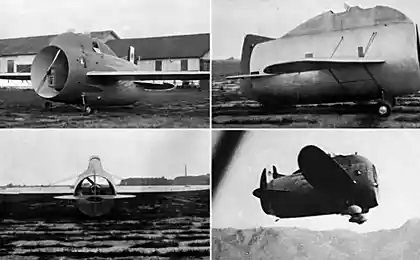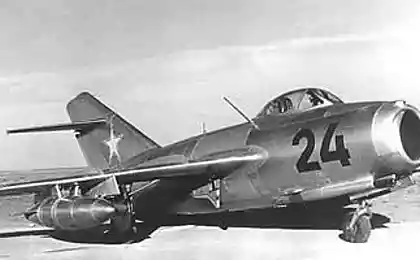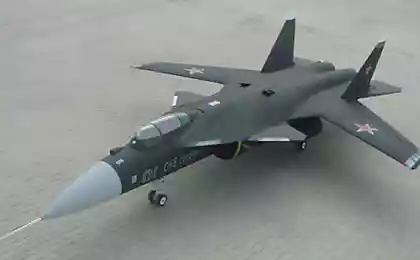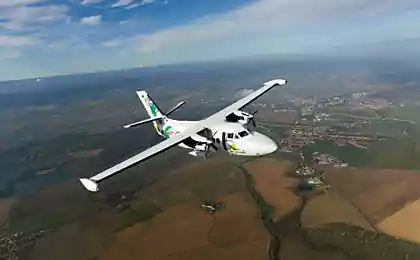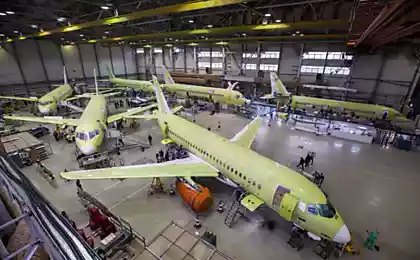1052
When a few of the fuselage: two-beam planes
In the mass consciousness of the plane appears flying machine having an elongated fuselage, wing and tail, all of these "units" are present on it in the singular. Such opinions of the masses is quite clear: the classic layout of the aircraft have long earned a reputation as the most convenient, simple and suitable for aircraft for various purposes. In addition to the classic layout versed in aviation can be called a few schemes of construction of the original aircraft, such as the flying wing or double-girder system. They are much less likely to apply classic layout, but not without certain advantages. It is worth noting, double-girder architecture aircraft in Europe for some time is often associated with a German reconnaissance aircraft FW-189, but the total number of models similar structure is sufficiently large. Consider the most well-known planes two-beam scheme, and at the same time find out why their creators abandoned the usual single fuselage.
45 photos
via
1.M-55 Geophysics
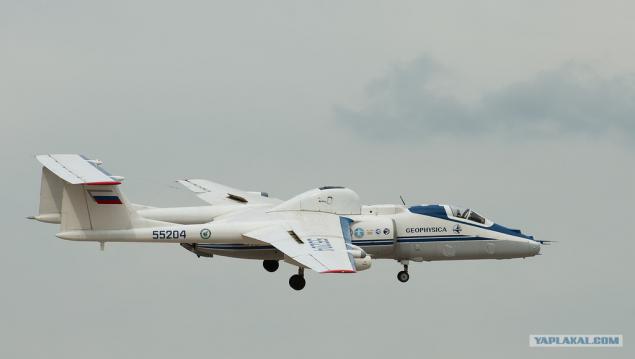
The most obvious reason "split the fuselage" - easy placement of the power plant. In the early years of aviation designers experimented with different layouts of aircraft and as a result of these investigations appeared several studies two-beam scheme.
For example, one of the prerequisites to the creation of double-girder aircraft was the absence of synchronizers for firing through the propeller. As an example of such a structure can take a fighter reconnaissance Airco DH-1 English production. In the development of this aircraft constructor George. De Haviland put workplace arrow in the bow. Because of this he was able to fire a machine gun safely entire front hemisphere, without fear of damaging its own aircraft. The engine and propeller in this case had to move to the rear of the fuselage. However, the application of the classical scheme it would entail the need to install a pusher propeller with a corresponding drive shaft or unbalance. Therefore, de Haviland shortened fuselage to an acceptable length and placed the pilot and gunner, and Propeller engines of each other. Empennage he set on the two remote farms, which are mounted on the sides of the pusher propeller.
2. Airco DH-1

Aircraft DH-1 can be called only from a small double-girder stretch. He was not "mature" fuselage beams, instead of which was equipped with two light farms. At the same time, and in such a fighter-reconnaissance design de Havilland has demonstrated the benefits of such a layout structure of the aircraft. In the future, the need for the transfer of the power plant and the release of the nose fuselage has repeatedly manifested itself in the form of typical aircraft structures. Dvuhbalochnye scheme with the engine located at the rear of a shortened fuselage, and repeatedly used in jet aircraft. As an example, such projects can lead British fighter De Havilland DH.100 Vampire, Polish agricultural aircraft WSK-Mielec M-15 Belphegor, or Soviet intelligence M-17 "Stratosphere».
3. De Havilland DH.100 Vampire

4. De Havilland DH.100 Vampire
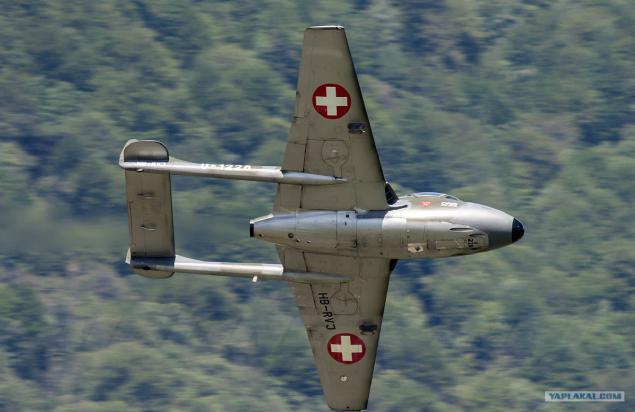
5. De Havilland DH.100 Vampire
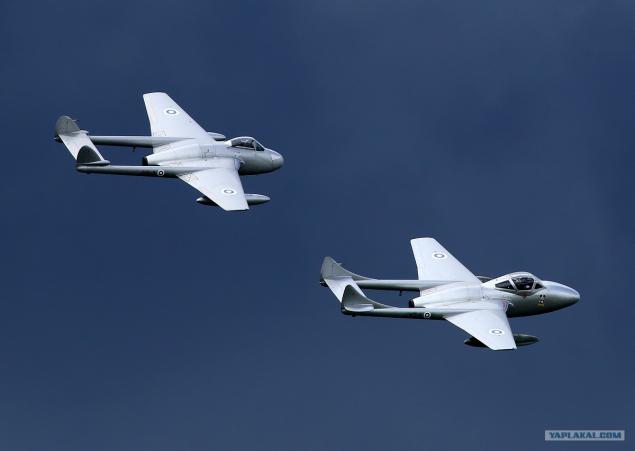
6. WSK-Mielec M-15 Belphegor

7. WSK-Mielec M-15 Belphegor
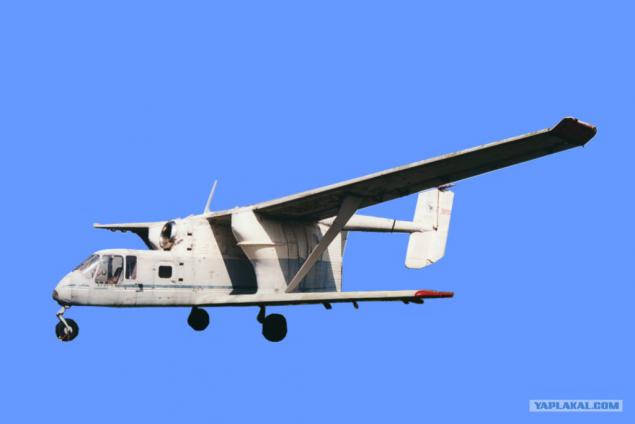
8. M-17 "Stratosphere»

9. The aircraft on the basis of M-17, M-55 Geophysics
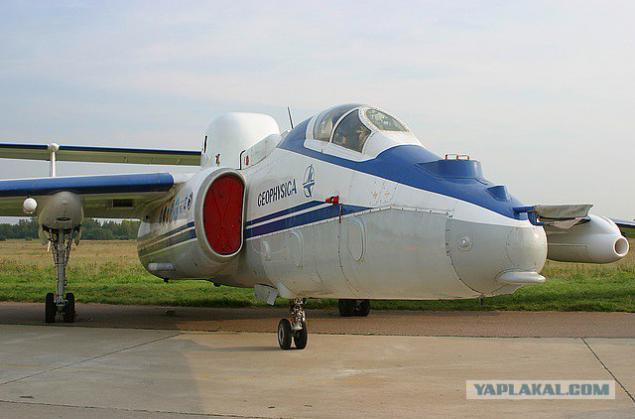
10. aircraft on the basis of M-17, M-55 Geophysics

Place for weapons
The second reason is related to the placement of the engine, on which designers resorted to the two-beam scheme, layout, too, has roots, but a different kind. Wanting to fully release the fuselage from the engine and auxiliary units, even during the First World War guessed designers do two beams on either side of the fuselage and put them all Propeller engines. One of the first of these aircraft was the Italian heavy bomber Caproni Ca.36. The engines of the aircraft were placed on the wing, and right behind them were two long beams, which served for fastening the tail. Inside the beams near the center of gravity of the aircraft also installed fuel tanks. Free up space in the nose and the tail of the main fuselage used for setting shooting points. It is noteworthy that the tail gunner during the flight sitting in reshechatoy basket.
11. Caproni Ca.36
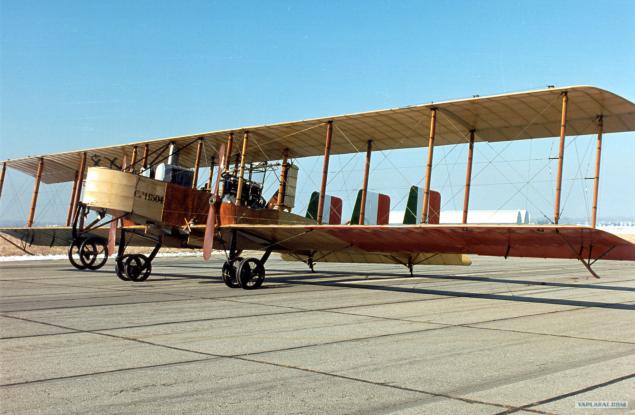
12. Caproni Ca.36
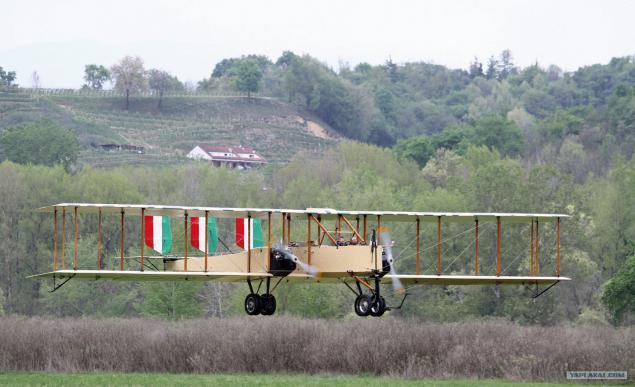
Later this idea was used repeatedly, mostly just to make room for fodder rifle point. The most famous example of this is the German reconnaissance plane Fokke Wulf FW-189 Uhu, also known by the nickname "Ram". Pilots of the anti-Hitler coalition regularly noted the complexity of the hijacked aircraft because of the extremely successful arrangement tail guns, shooting almost the entire rear hemisphere.
Dvuhbalochnye scheme with the recommendations of the fuselage and engines used to create fighters. The most famous double-girder aircraft of this class is the American Lockheed P-38 Lightning. In a relatively small streamlined fuselage of the fighter were only the cockpit and barreled weapons. The fuselage side beams, in turn, placed the engines, tanks, turbochargers and radiators. With proper placement of units inside the beam managed to ensure a good balance and a relatively large shoulder tail gave the aircraft a good weight for its maneuverability.
An interesting way ordered released into the fuselage space designers firm Northrop, creating a night fighter P-61 Black Widow. At the rear of the fuselage shortened, they placed a piece of hardware radar detection of enemy aircraft, as well as provided a radar operator position.
13. Fokke Wulf FW-189 Uhu
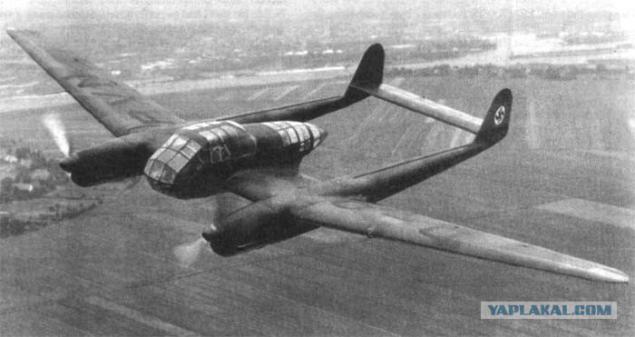
14. Fokke Wulf FW-189 Uhu

15.Fokke Wulf FW-189 Uhu
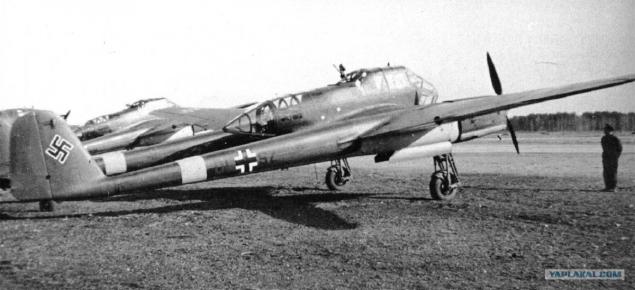
16. Lockheed P-38 Lightning

17. Lockheed P-38 Lightning

45 photos
via
1.M-55 Geophysics

The most obvious reason "split the fuselage" - easy placement of the power plant. In the early years of aviation designers experimented with different layouts of aircraft and as a result of these investigations appeared several studies two-beam scheme.
For example, one of the prerequisites to the creation of double-girder aircraft was the absence of synchronizers for firing through the propeller. As an example of such a structure can take a fighter reconnaissance Airco DH-1 English production. In the development of this aircraft constructor George. De Haviland put workplace arrow in the bow. Because of this he was able to fire a machine gun safely entire front hemisphere, without fear of damaging its own aircraft. The engine and propeller in this case had to move to the rear of the fuselage. However, the application of the classical scheme it would entail the need to install a pusher propeller with a corresponding drive shaft or unbalance. Therefore, de Haviland shortened fuselage to an acceptable length and placed the pilot and gunner, and Propeller engines of each other. Empennage he set on the two remote farms, which are mounted on the sides of the pusher propeller.
2. Airco DH-1

Aircraft DH-1 can be called only from a small double-girder stretch. He was not "mature" fuselage beams, instead of which was equipped with two light farms. At the same time, and in such a fighter-reconnaissance design de Havilland has demonstrated the benefits of such a layout structure of the aircraft. In the future, the need for the transfer of the power plant and the release of the nose fuselage has repeatedly manifested itself in the form of typical aircraft structures. Dvuhbalochnye scheme with the engine located at the rear of a shortened fuselage, and repeatedly used in jet aircraft. As an example, such projects can lead British fighter De Havilland DH.100 Vampire, Polish agricultural aircraft WSK-Mielec M-15 Belphegor, or Soviet intelligence M-17 "Stratosphere».
3. De Havilland DH.100 Vampire

4. De Havilland DH.100 Vampire

5. De Havilland DH.100 Vampire

6. WSK-Mielec M-15 Belphegor

7. WSK-Mielec M-15 Belphegor

8. M-17 "Stratosphere»

9. The aircraft on the basis of M-17, M-55 Geophysics

10. aircraft on the basis of M-17, M-55 Geophysics

Place for weapons
The second reason is related to the placement of the engine, on which designers resorted to the two-beam scheme, layout, too, has roots, but a different kind. Wanting to fully release the fuselage from the engine and auxiliary units, even during the First World War guessed designers do two beams on either side of the fuselage and put them all Propeller engines. One of the first of these aircraft was the Italian heavy bomber Caproni Ca.36. The engines of the aircraft were placed on the wing, and right behind them were two long beams, which served for fastening the tail. Inside the beams near the center of gravity of the aircraft also installed fuel tanks. Free up space in the nose and the tail of the main fuselage used for setting shooting points. It is noteworthy that the tail gunner during the flight sitting in reshechatoy basket.
11. Caproni Ca.36

12. Caproni Ca.36

Later this idea was used repeatedly, mostly just to make room for fodder rifle point. The most famous example of this is the German reconnaissance plane Fokke Wulf FW-189 Uhu, also known by the nickname "Ram". Pilots of the anti-Hitler coalition regularly noted the complexity of the hijacked aircraft because of the extremely successful arrangement tail guns, shooting almost the entire rear hemisphere.
Dvuhbalochnye scheme with the recommendations of the fuselage and engines used to create fighters. The most famous double-girder aircraft of this class is the American Lockheed P-38 Lightning. In a relatively small streamlined fuselage of the fighter were only the cockpit and barreled weapons. The fuselage side beams, in turn, placed the engines, tanks, turbochargers and radiators. With proper placement of units inside the beam managed to ensure a good balance and a relatively large shoulder tail gave the aircraft a good weight for its maneuverability.
An interesting way ordered released into the fuselage space designers firm Northrop, creating a night fighter P-61 Black Widow. At the rear of the fuselage shortened, they placed a piece of hardware radar detection of enemy aircraft, as well as provided a radar operator position.
13. Fokke Wulf FW-189 Uhu

14. Fokke Wulf FW-189 Uhu

15.Fokke Wulf FW-189 Uhu

16. Lockheed P-38 Lightning

17. Lockheed P-38 Lightning



